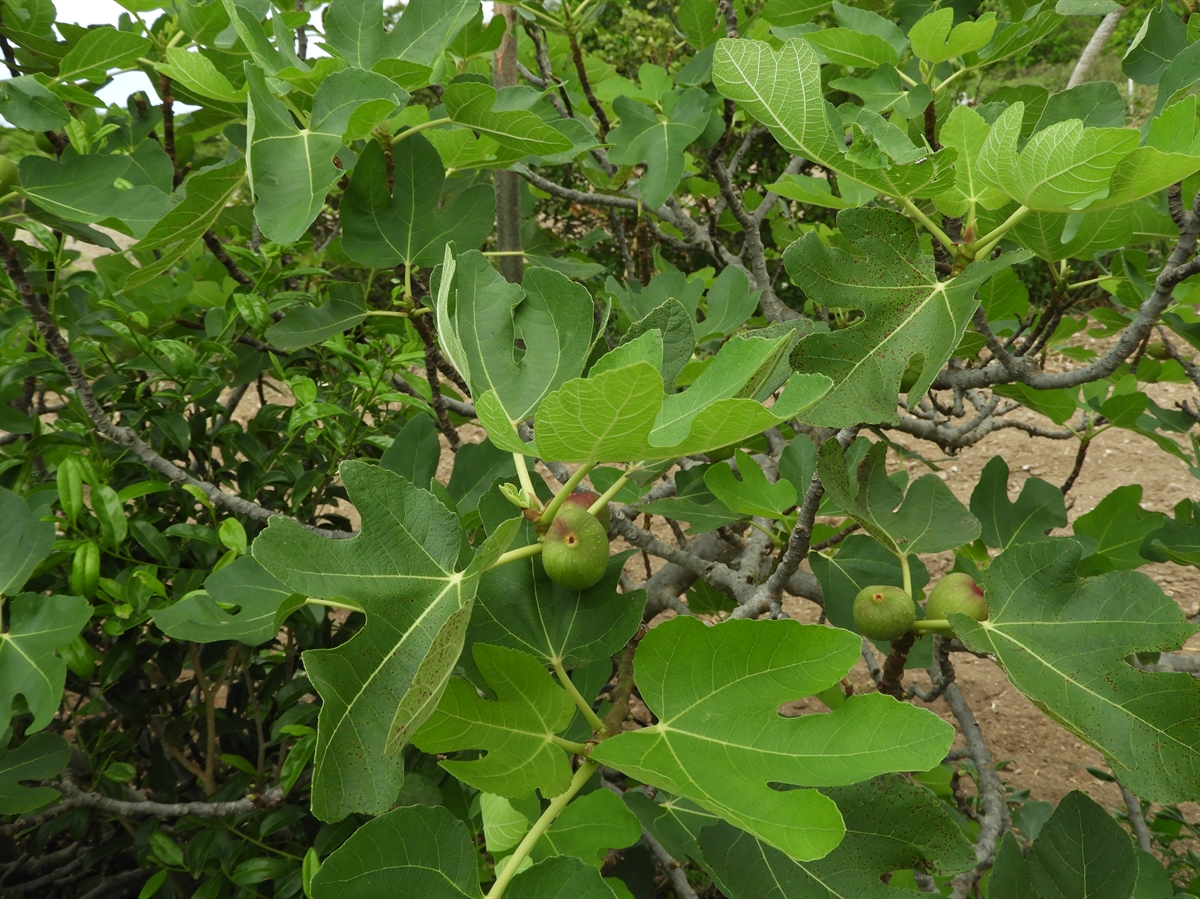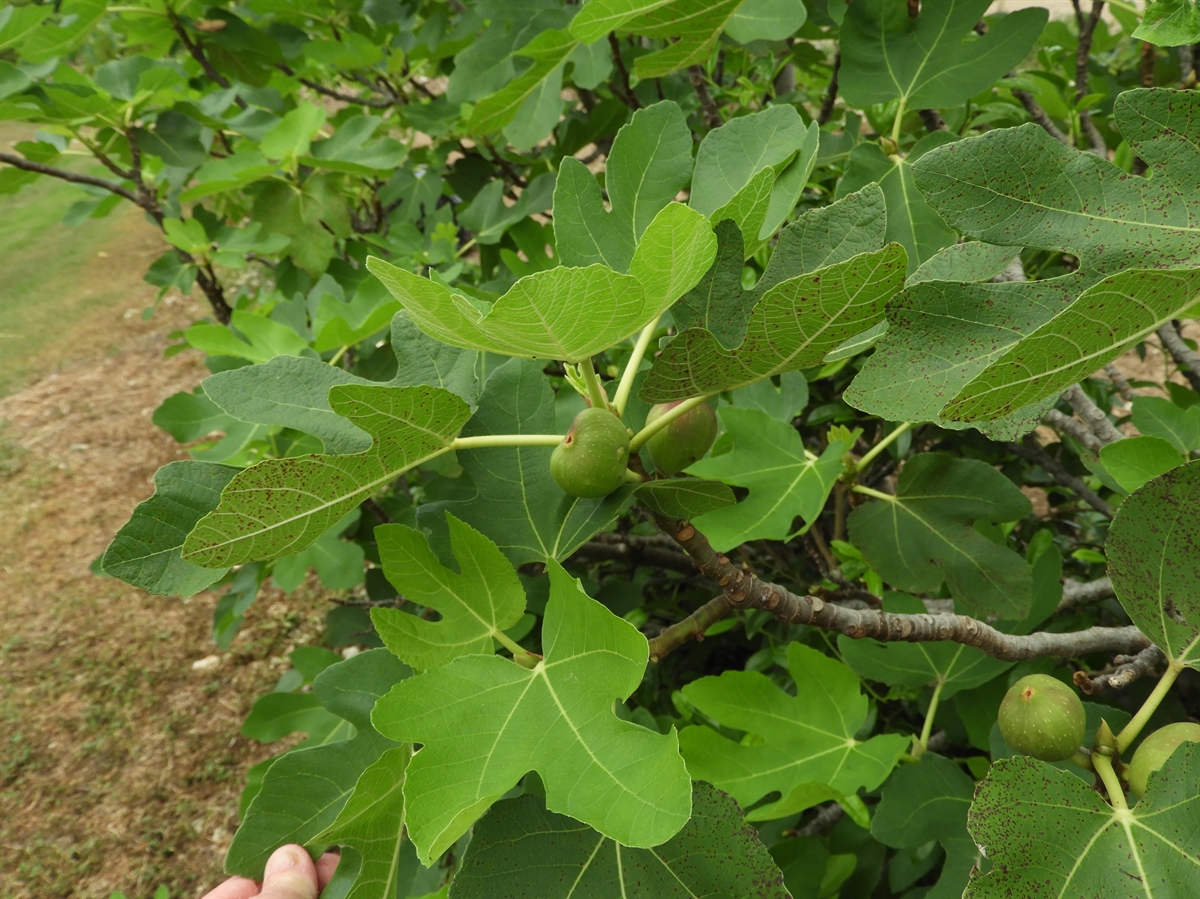Habit: Ficus carica grows as a large tree to 15 m in height with drooping branches and few if any aerial roots. The leaves are arranged alternately, to 25 cm in length, ovate, entire to palmately lobed and a rounded leaf apex. The adaxial leaf surface is rough. Where the petiole attaches to the stem there is a prominent ring on the stem formed from the dehiscent apical sheath. The apical sheath has a slight hook at its tip known as a “cats-claw”. Vegetative material produces a slightly milky latex when broken.
The highly reduced incomplete, imperfect, actinomorphic, flowers are borne entirely within a structure known as a Synconium (fig) and are fertilized by wasps. It is monoecious. Staminate flowers have a perianth of 2-6 parts and 2 anthers. The carpellate flowers have no perianth or stamens and a single carpel. The green to purple like “fruits” are in pairs, sessile on the stem, and to 5 cm in length.
Habitat: Ficus carica grows in Human Altered environments (yards, gardens, farms).
Distribution: Ficus carica is NOT native to the Lucayan Archipelago. It is native to the Middle East and western Asia.
Medicinal/Cultural/Economic usage: Ficus carica is not known to be used medicinally in the Lucayan Archipelago.
Ficus carica is grown for its tasty “fruits”.

